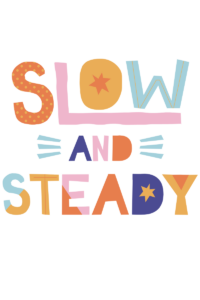This past week has been very emotional and intense, for several different reasons. The media has been flooded with so much information and resources regarding the Black Lives Matter movement.
Here at Zenned Math, we have had some great conversations in our Facebook Group- Zenned Math Teachers.
We’ve even had many new members join our wonderful community. We, as a community have a lot of work to do. So let’s begin.
The first step in all of this is to research and learn what the challenges are for marginalized groups, how systemic oppression weighs in, and how to be an ally.
There has been a lot of discussion around allyship. So what is that really?
An ally is someone who is not part of a marginalized group but who takes action to support that group.
Now marginalized groups are plural for a reason. Many different people are underrepresented and face racial inequalities. Recently the movement is focused around Black lives. However, other marginalized groups include indigenous, Latinx, middle eastern, Asian American people, and many others.
It may seem silly for me to go over these terms, but the reality is many people are unaware of what they truly mean. For example, the acronym BIPOC is it stands for Black, Indigenous, People Of Color. I get a lot of questions about the term Latinx. That’s just representing a person of Latin American origin that is gender-neutral. For example, typically, Latino is used for males and Latina for females. Latinx removes gender. This post will break down other terms along the way.
Many people have felt really uncomfortable this past week. Racism is often an awkward and challenging topic to talk about. Most people avoid it altogether. Like the Thanksgiving rule, “don’t talk about race, politics, or religion”. At least that’s the rule that SOME people adhere to.
It’s not that the conversations about racism were never happening. Racism has been talked about forever. It just may not have been discussed in your circles.
Society has conditioned themselves to believe they are color blind, which is the most unproductive way to look at race. How do you face inequalities if you refuse to SEE them?
If anything positive came out of this terrible week, it was the conversations around this topic finally started to happen on a global level.
So what do we do at this point? With all this new information, where do we go from here?
We start by learning.
Researching and learning.
You have to put in the work there first.
And while you’re at it, please do me the favor of not bombarding the only POC (person of color) that you may know with a billion questions. BIPOC have been putting in the work for a very long time. Do you know how offensive it sounds to ask a POC that you know to give you information that you should have done? Remember slavery, when white people made black people put in the labor for them. Yeah, that time is over. Do your own work? Please.
The next step. Analyze how you can be anti-racist. It’s about taking action, and a great place to start is your immediate environment.
Let’s Get Real
Let’s be honest for a second, before this news cycle, how many BIPOC did you follow or look at as educational leaders? Who were the leaders you learned from? Who were your college teachers? Who were your professional development facilitators? Do they all look the same? We need people that look different, that think differently.
Are BIPOC even given leadership positions? Power should lie in the hands of truly mixed groups. But let’s look at the education system that is blocking BIPOC from getting leadership positions.
Analyze how many minorities are staffed at your school or district, and not as support staff but as educators? Don’t think there’s a diversity issue in your school district? Who’s checking the demographics of staff, or of students? How can we (I’m speaking as a POC) possibly be leaders if we’re not given the opportunity to work in your district?
Let’s Take Action
You may not think of yourself as a diversity leader, but you are. You can help create an inclusive environment. How does that start?
Start putting yourself on the hiring committees. Start questioning where the pool of applicants are coming from? Is it from a local college that primarily has white graduates?
They say it’s all about who you know. But if your own circles are not diverse, if all your friends are white, aren’t we just hiring more of the same?
Let’s Truly Be An Ally
And if you actually have BIPOC educators in your building, help amplify their voice. Boost your colleagues standing and reputations within the school. If they propose a good idea, repeat it and give them credit. You know what I hate about teaching. It’s competitive nature. Some teachers want to stand out and look better than the rest. Get over that. This should be a field of collaboration. So ensure that other voices beyond your own are heard. Especially marginalized voices.
Let’s Learn From BIPOC, And Not Just About Race
You can also start following and learning from educational leaders that are BIPOC. Advocate for them to come into your school district and provide professional development for the staff.
I just want to throw this out there because it’s what I see as a huge issue when it comes to providing teachers with professional learning. You cannot hire a POC to provide you PD solely on culturally responsive teaching. Speaking as a person of color. I can present some kick-ass math strategies as well as address racial inequalities. I hate that BIPOC get put in a box as if the only thing we can talk about is race. https://zennedmath.com/going-against-the-grain/
Let’s Start There
Examine who’s in your educational circle. Follow different people, get diverse perspectives. Advocate for more BIPOC or underrepresented groups as keynote speakers or employees in your district. Amplify their voices and their work. Showcase that they are or can be leaders in your community.
Want to check out more?
MEMBERSHIP SITE:
https://zennedmath.com/online-courses/
FACEBOOK GROUP: Zenned Math Teachers
https://www.facebook.com/groups/zennedmathteachers/
YOUTUBE CHANNEL: Zenned Math
https://www.youtube.com/channel/UC5njH_5LoK6G67BvZecGfnw?
WANT ME IN YOUR INBOX? Sign up for my newsletter
https://view.flodesk.com/pages/5efc876dcaabca0028b95eb5
DISCLAIMER: Some links included in this blog might be affiliate links. If you purchase a product or service with the links that I provide, I may receive a small commission. There is no additional charge to you!

